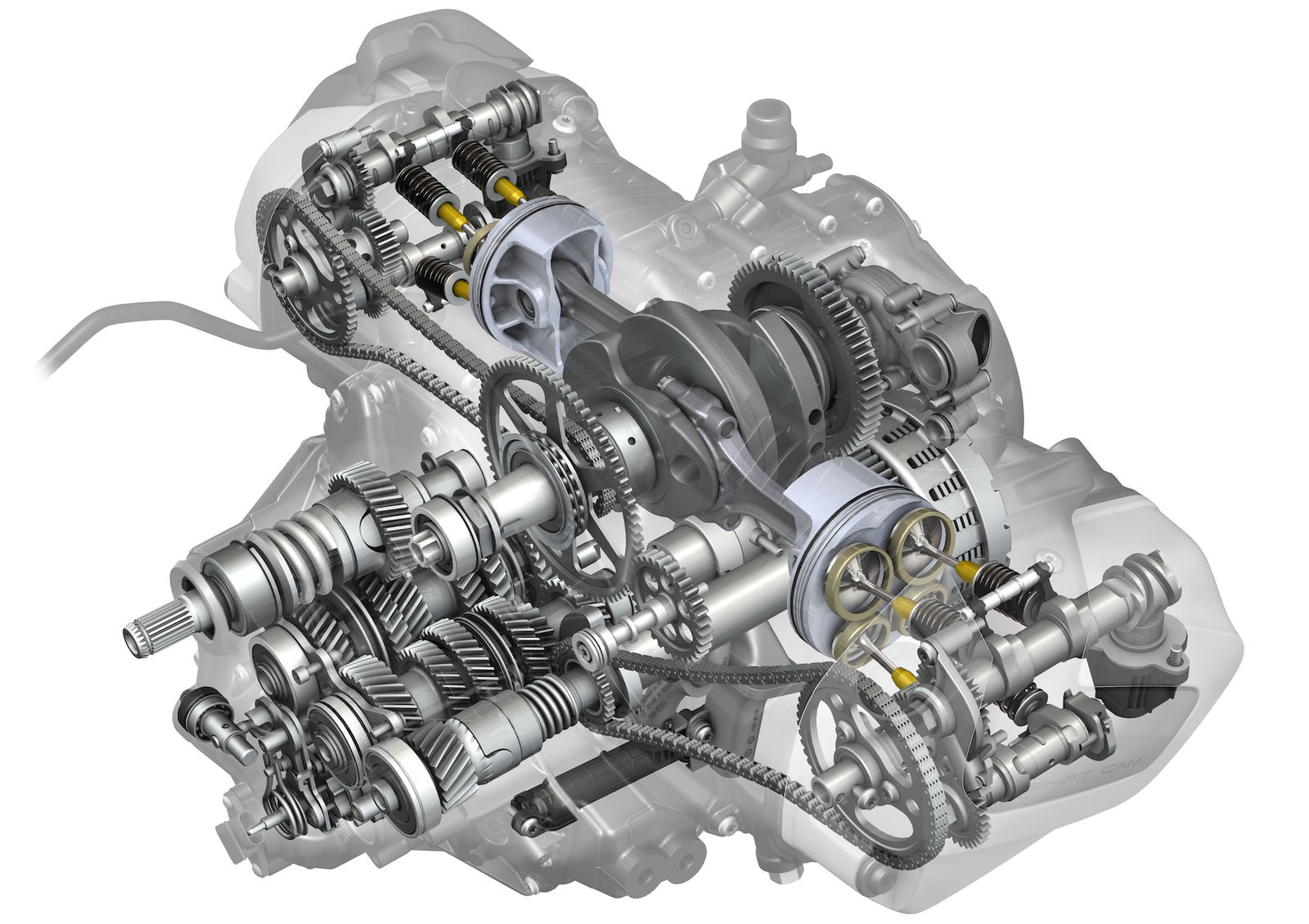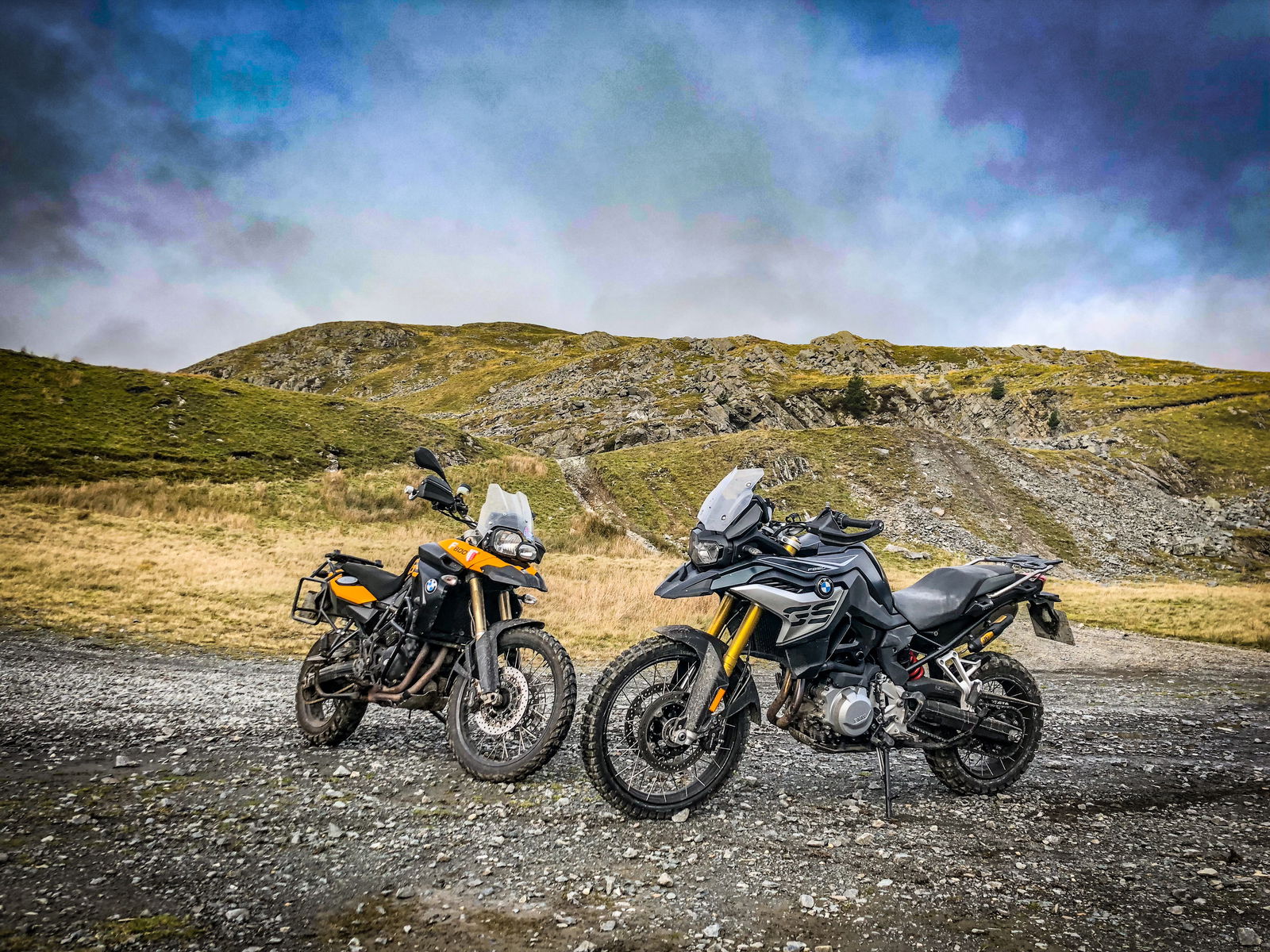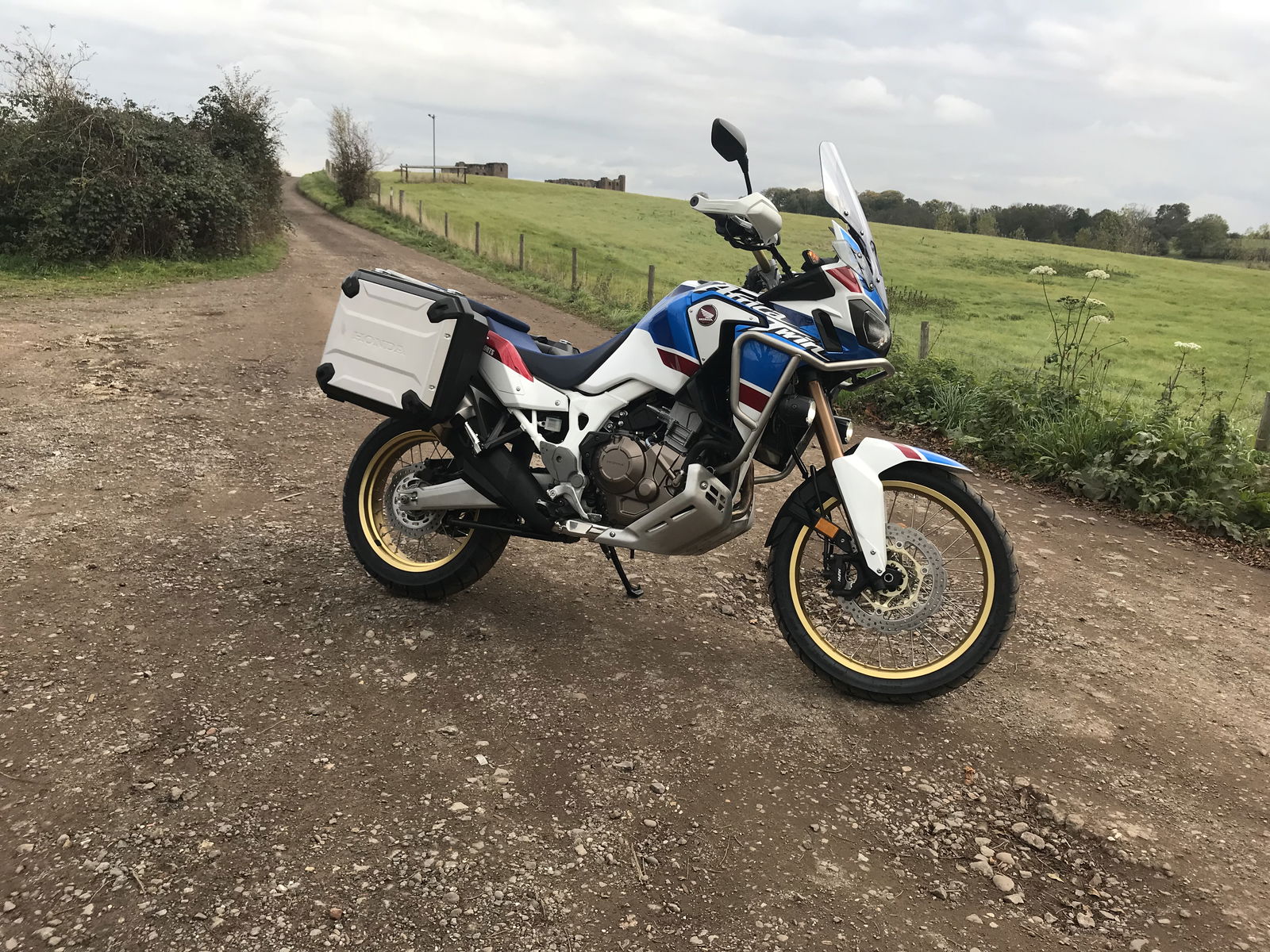First ride: 2019 BMW R1250GS
Could BMW's engineers better Britain's favourite bike?

BMW’S GS needs no introduction. Revered by riders worldwide, and used for anything from commuting to continent crossing, the Gelände/Straße model family has spearheaded the manufacturer’s 21st century success.
And the patriarch of this family is the R1200GS, a huge behemoth of a bike, weighing in excess of 240kg, with more power than your average hatchback and available in half a dozen different guises.
But as with any hugely popular product, the problem lies in improving. What can you do to better a bike that has already topped sales charts for several years in a row, and has sold tens of thousands of units since it launched in 2004?
That was the question put to Motorrad’s engineers; can you make the best better? The answer, quite simply, was yes.
Introducing the new BMW R1250GS, which Visordown rode on launch in Wales last week.
First impressions
This new model is unmistakeable GS. The cylinder heads still extend far beyond your feet, engine bars are all-consuming and that asymmetrical headlight sits atop a short beak. As far as looks go, this is but a refinement, and a successful one at that. The new GS somehow manages to look both more aggressive and stylish at the same time, especially in the Rallye and TE Exclusive editions – the latter boasting a smart black, grey and yellow colour scheme, and the former gold wheels and a colour-coded bench seat.
Engine
Under the belt is where the real magic has happened. This latest generation boxer engine is not only larger than its predecessor – it’s up to 1,254cc from 1,170cc – but there’s a host of new mechanical goodies inside, including a new engine cooling system to cope with that increased capacity.
The most important update has to be the introduction of BMW’s ShiftCam Technology – a system enabling variation of the valve timings and valve stroke on the intake side, and featuring intake camshafts designed for asynchronous opening of the two intake valves making for ‘optimised swirl and thus more effective combustion’.

Basically, the camshaft gate moves to put the system on either full load or partial load, which adjusts the valve timing and stroke and therefore changes the fuel and air intake. The system isn’t set to kick in at a particular rev range, but is all dependant on throttle input – giving it a big handful at 3,000rpm will be enough to trigger the move from partial to full load.
If you’re thinking this sounds a lot like Honda’s VTEC system, then you’re not alone. But you’re also wrong. Whereas Honda’s system worked by ‘switching off’ two valves in each cylinder at low revs, the Shiftcam system varies both valve timing and lift (the distance by which the valve opens). BMW claim this system is far smoother than any seen before, and challenged us to find the ‘kick’ under acceleration as the valves fully open (spoiler – you can’t).
There’s a new camshaft drive too – via a toothed chain rather than a roller chain as before – which promises further engine smoothness.
Both the R1250GS and the R1250RT feature a new digital engine control, which BMW call BMS-O, and the use of new twin-jet injection valves which promises even more effective carburetion, further refinement, and improved emissions .
And living up to its adventurous image, BMW has included a knock sensor system in this new engine, which will allow the use of poor quality fuel (with a rating of less than RON 95) in far flung destinations – a very useful tool for GS globetrotters.
The gearbox remains unchanged from the previous model, with a quickshifter and autoblipper standard on higher spec models.
Finally, there’s a new exhaust system, for ‘optimum performance characteristics’. To the untrained ear this sounds quieter and less rumbly than its predecessor, although a back-to-back comparison would be required to be sure.
Power and torque
That extra 84cc (and some reworked internals) has resulted in a nine per cent power hike, from 125hp at 7,750rpm to 136hp at 7,750rpm. Torque meanwhile is up by 14 percent, from 125Nm at 6,500,rpm to 143Nm at 6,250rpm.
Power delivery feels so much smoother, especially from lower down. On-road this gives the bike a sportier feel, making it more akin to its more powerful rivals – namely the 158hp Ducati Multistrada 1260 and the 139hp Triumph Tiger 1200. You can aggressively open the throttle at low revs and the power delivery is marvellous – so smooth, and you just cannot feel the Shiftcam technology at work.
Off-road that increased power down low could be a little intimidating, especially for newer riders, and even more experienced off-roaders said that for slower more technical riding it could prove difficult.
Further up the rev range, the increased power and torque is tangible, and top end has certainly improved too. A back to back test would determine exactly how much pokier it feels, but on the launch BMW had no intentions of letting us in the saddle of its predecessor.
Despite the bike having put on a whole 5kg of weight, the 1250 feels much lighter than its predecessor, purely because there’s no jerking under heavily acceleration and that increased torque certainly helps too.
Economy
Variable valve timing tends to make engines more fuel efficient, and the BMW system is no exception. The new R1250GS has a claimed fuel efficiency of 59.5mpg (4.75l/100km) – that’s a significant improvement on the R1200’s 42mpg.
With a 20-litre tank, the new R1250GS should be getting almost 250 miles from a fill. However, real world conditions vary, so I wouldn’t be setting your sights too high…
Handling, suspension and chassis
While the BMW’s beating heart may be new, next to nothing has changed across the chassis. The engine is still a stressed member of the two piece steel tube frame and the Telelever fork and Paralever shaft drive remain the same.
But this is certainly not to the bike’s detriment – if you’ve ever ridden the R1200GS, you will see why BMW deemed no action necessary.
Front end grip – as with the latest generation R1200GS – is impeccable and the steering so direct. BMW’s Telelever fork works by separating the two functions of wheel alignment and damping/suspension, with the forks keeping the wheel aligned, while suspension and damping is performed by a central spring strut behind. Optional ‘sports suspension’ is available for the ‘HP Rallye’ model, featuring an increased spring rate (harder suspension) and longer spring struts, giving increase travel.
We already knew this, but this this set-up is just so capable, especially with that Dynamic ESA – standard on the higher spec models – which reads various sensors including lean angle, brake pressure, speed and pitch in order to automatically adjust the damping and keep the bike level.
You still struggle to get much feeling from the rear, but that’s the case of any shaft driven motorcycle. And for what it lacks in feel, the shaft drive makes up for in reliability and low maintenance requirements.
Off road and wearing Michelin Anakee IIIs, the R1250GS feels very similar to its predecessor – solid, balanced and forgiving. Suspension travel of 190mm at the front of and 200mm at the rear is more than adequate for what any of us mere mortals could ever think of doing with it – give the bike to BMW Off-Road Skills instructors Simon Pavey or Chris Northover and I’m sure it would be a different story altogether.
Personally, I have always found the bigger GSes difficult and unwieldy off-road, with that low centre of gravity making it hard to steer the bike by weighting the pegs. Having taken my F850GS long termer off-road recently, I can honestly say I prefer its bouncy large-trailbike like feel to the GS’s stability and ‘barge through anything’ approach. Likewise, I found KTM’s 1290 Super Adventure and Ducati’s Multistrada 1260 Enduro easier off-road than the GS.
That improved power delivery can be a blessing or a curse off-road on the new model, depending on who you ask. In my opinion, it’s smoothness off the mark is certainly an improvement over the previous model, although it certainly takes a bit of getting used to (especially after coming off my F850GS long termer). I heard mutterings that the additional power down low may be a little too much for the big bike off-road, but more time off-road ride would be required to ascertain that.
On the base spec R1250GS there’s Automatic Stability Control (ASC) and two riding modes of Rain and Road as standard, with the ‘Riding Modes Pro’ option adding additional Dynamic, Dynamic Pro, Enduro and Enduro Pro riding modes, which feature Dynamic Traction Control DTC, ABS Pro, Hill Start Control Pro and Dynamic Brake Assistant DBC. All of these features bring an addition level of safety over the base spec, including while cornering or off-camber.
Via the pro system you can tailor engine braking, throttle input and a number of other parametres to set up the bike exactly how you would like it to perform.
One thing to note is the standard suspension configuration in the various modes. In ‘Dynamic’ mode, it felt far too firm for any kind of engaging riding, even when load set up was on ‘only rider’. Leaving the bike in ‘Dynamic and manually switching to ‘Road’ suspension was a far better compromise. Helpfully, the bike ‘remembers’ the suspension set-up, to avoid having to constantly reset it when switching between modes.
Brakes
Brembo be banished! BMW has ditched the long-favoured Italian manufacturer, and gone for brakes built by US company Hayes. I can’t say they feel any better or worse than the previous set up, and the addition of a couple of handy features certainly improves the brakes package as a whole.
All models now receive Hill Start Control as standard. On the entry level models, it is activated when you activate the front or rear brake. Higher spec models feature Hill Start Pro, which is automatically activated when the bike’s IMU detects that you have stopped on a slope. Neither system is at all intrusive, and both can be deactivated in the bike’s settings.
The optional Dynamic Brake Control (DBC), meanwhile, works to increase safety while braking, and prevent a panicked accidental handful of throttle. It does this by intervening in the engine control and reducing drive torque while braking, therefore making full use of braking power at the rear wheel, allows for immediate, stable braking. A new dynamic brake light, which comes with the pro riding modes upgrades, lights up to show following vehicles that the bike is decelerating.
Comfort
Having ridden the R1200GS Adventure recently, I approached the R1250 expecting a gargantuan beast with a seat height to match.
Luckily for my 31-inch inner leg the R1250 shares its ergonomics with the R1200GS, and in the lower seat position is actually quite accessible. Setting the suspension to low mode makes the bike even more short-arse friendly and adding a low seat takes the height down to 800mm. At the other end of the spectrum, the HP style with sports suspension and Rallye seat takes the seat to a sky high 900mm.
The bike has all the tricks of an established tourer – tall, wind-deflecting screen, wrap-around handguards, heated grips, user-friendly switch gear, adjustable seat height, and removeable rubber footpeg inserts.
The Rallye model features a shorter, non-adjustable screen, and wide off-road footpegs.
Equipment
Remember that tidy TFT dash BMW unveiled last year? Good news, it’s now standard on the R1250GS, complete with connectivity (via an app) and BMW’s emergency call option, which you don’t need a phone connected to the bike to use.
This screen is colourful and clever, with all the necessary information fairly easy to access. Adjustments made via the plush switchgear are displayed here, and further information such as service intervals and tyre pressures are not miles away.
Also standard on this new model is the LED headlight, while you can spec daytime running lights.
The high-spec TE models come with the ‘pro plug’, giving access to all of the pro riding modes and associated suspension adjustments.
On top of this extensive spec, there’s tons of accessories, designed to make the bike either more comfortable on road, or more capable off.
As standard, the GS comes in either Cosmic Blue or Blackstorm metallic, while the TE Exclusive features that lovely Blackstorm Metallic/Night Black (black, grey and yellow) combination. The Rallye wears a reworked version of the Rallye colours (Light White/Racing Blue metallic/Racing Red), complete with gold rims.
BMW is shouting about the fact that you can now order the GS in BMW Spezial trim, which is essentially customised from factory with machined accessories and special paint jobs.
And as BMW recently announced, all bikes now come with a three-year warrantly (up from the previous 2 years), with Europe-wide Roadside Assistance. The German-brand is already renown for its customer service, and this only sweetens the deal.

